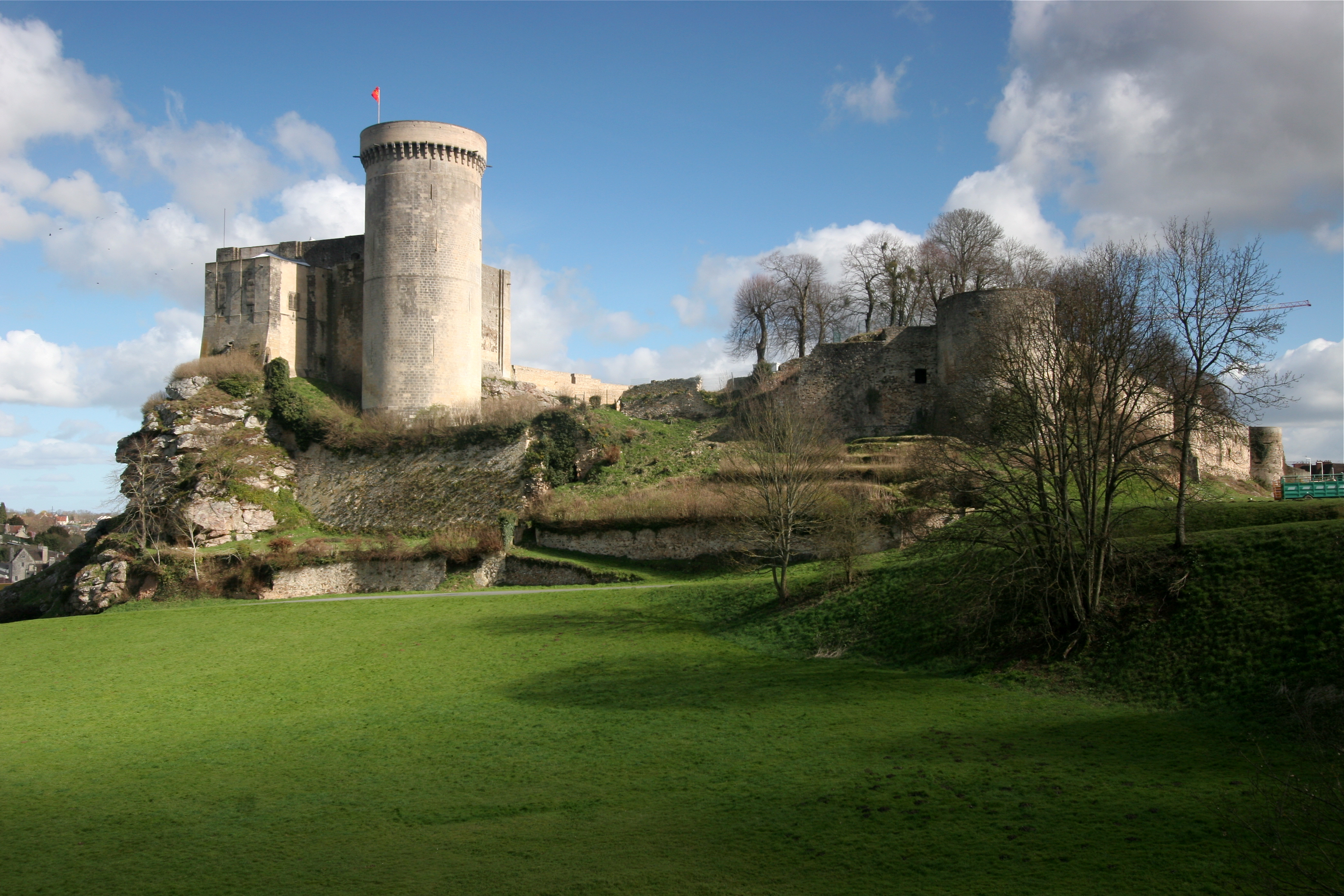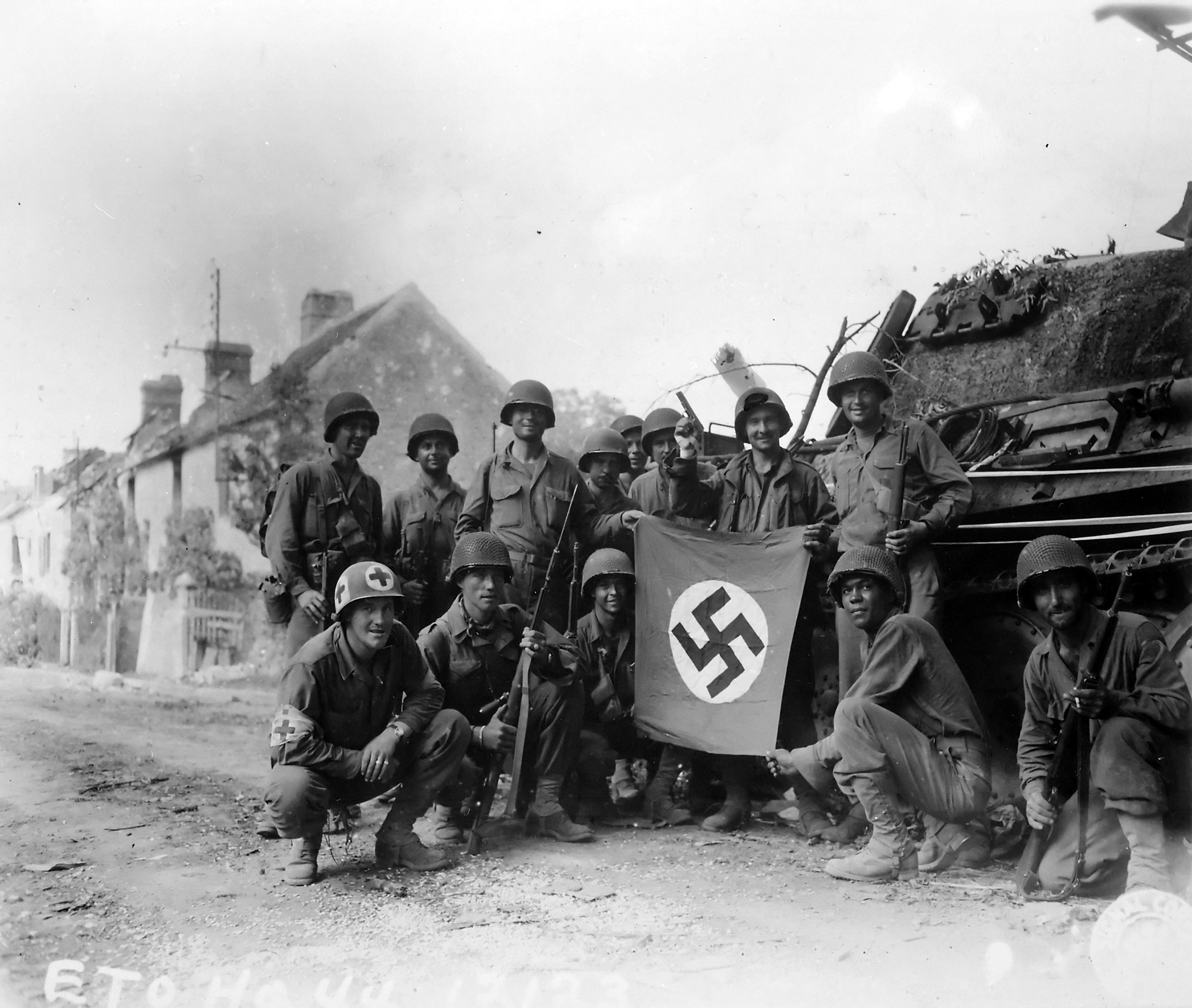Falaise, Calvados on:
[Wikipedia]
[Google]
[Amazon]
Falaise () is a
 Falaise, as it is sited today, probably came into being around the castle.
The town was the birthplace of
Falaise, as it is sited today, probably came into being around the castle.
The town was the birthplace of
 In modern times, it is known for the battle of the Falaise Pocket during the Allied reconquest of France (called Operation Overlord) in August 1944 in which two German armies were encircled and destroyed by the Allied armies. Some 10,000 German troops were killed and 50,000 taken prisoner.
Two-thirds of Falaise was destroyed by Allied bombing before the town was taken by a combined force of Canadian and Polish troops. Falaise was largely restored after the war.
In modern times, it is known for the battle of the Falaise Pocket during the Allied reconquest of France (called Operation Overlord) in August 1944 in which two German armies were encircled and destroyed by the Allied armies. Some 10,000 German troops were killed and 50,000 taken prisoner.
Two-thirds of Falaise was destroyed by Allied bombing before the town was taken by a combined force of Canadian and Polish troops. Falaise was largely restored after the war.
 Falaise has been twinned with Henley-on-Thames in Oxfordshire, England, since 1974;
Falaise has been twinned with Henley-on-Thames in Oxfordshire, England, since 1974;
Castle William the Conqueror in Falaise, France.
(Official website in English)
Normandieweb on Falaise
(in French)
Personal blog with good images of the William the Conqueror statue in Falaise {{authority control Communes of Calvados (department) Calvados communes articles needing translation from French Wikipedia
commune
A commune is an alternative term for an intentional community. Commune or comună or comune or other derivations may also refer to:
Administrative-territorial entities
* Commune (administrative division), a municipality or township
** Communes of ...
in the Calvados
Calvados (, , ) is a brandy from Normandy in France, made from apples or pears, or from apples with pears.
History In France
Apple orchards and brewers are mentioned as far back as the 8th century by Charlemagne. The first known record of Nor ...
department in the Normandy
Normandy (; french: link=no, Normandie ; nrf, Normaundie, Nouormandie ; from Old French , plural of ''Normant'', originally from the word for "northman" in several Scandinavian languages) is a geographical and cultural region in Northwestern ...
region
In geography, regions, otherwise referred to as zones, lands or territories, are areas that are broadly divided by physical characteristics ( physical geography), human impact characteristics ( human geography), and the interaction of humanity an ...
in northwestern France.
Geography
Falaise lies on the river Ante, a tributary of the river Dives, about southeast of Caen.History
The area around Falaise has been inhabited from prehistoric times, but it was only at the end of the prehistoric period and the beginning of the Gallo-Roman era that the area, Falaise in particular, was regularly inhabited. Evidence of settlement from the time has been found at Vaston, an agricultural area just north-east of the modern town. Falaise, as it is sited today, probably came into being around the castle.
The town was the birthplace of
Falaise, as it is sited today, probably came into being around the castle.
The town was the birthplace of William the Conqueror
William I; ang, WillelmI (Bates ''William the Conqueror'' p. 33– 9 September 1087), usually known as William the Conqueror and sometimes William the Bastard, was the first House of Normandy, Norman List of English monarchs#House of Norman ...
, first of the Norman
Norman or Normans may refer to:
Ethnic and cultural identity
* The Normans, a people partly descended from Norse Vikings who settled in the territory of Normandy in France in the 10th and 11th centuries
** People or things connected with the Norm ...
Kings of England. He was frequently referred to as William the Bastard, on account of his being born out of wedlock to Herleva
Herleva ( 1003 – c. 1050) was an 11th-century Norman woman known for having been mother of William the Conqueror, born to an extramarital relationship with Robert I, Duke of Normandy, and also of William's prominent half-brothers Odo of Bayeux ...
from Falaise, reputedly a tanner's daughter.
The Château de Falaise (12th–13th century), which overlooks the town from a high crag (french: falaise), was formerly the seat of the Dukes of Normandy. Also, the Treaty of Falaise
The Treaty of Falaise was a forced written agreement made in December 1174 between the captive William I, King of Scots, and Henry II, King of England.
During the Revolt of 1173-1174, William joined the rebels and was captured at the Battle of ...
was signed at the castle in December 1174 between the captive William I
William I; ang, WillelmI (Bates ''William the Conqueror'' p. 33– 9 September 1087), usually known as William the Conqueror and sometimes William the Bastard, was the first Norman king of England, reigning from 1066 until his death in 10 ...
, King of Scots
The monarch of Scotland was the head of state of the Kingdom of Scotland. According to tradition, the first King of Scots was Kenneth I MacAlpin (), who founded the state in 843. Historically, the Kingdom of Scotland is thought to have grown ...
, and the Plantagenet King of England, Henry II.
The town was also the place that Rabbi Yom Tov of Falaise, grandchild of Rashi
Shlomo Yitzchaki ( he, רבי שלמה יצחקי; la, Salomon Isaacides; french: Salomon de Troyes, 22 February 1040 – 13 July 1105), today generally known by the acronym Rashi (see below), was a medieval French rabbi and author of a compre ...
, held his rabbinical court.
On 26 October 1851, a statue of William the Conqueror
The statue of William the Conqueror is located in his birthplace, Falaise, Calvados, about 30 kilometres (19 miles) southeast of Caen, France. It depicts William the Conqueror, Duke of Normandy and King of England, on a horse, and is surrounded by ...
was inaugurated here (at his place of birth).
World War II
 In modern times, it is known for the battle of the Falaise Pocket during the Allied reconquest of France (called Operation Overlord) in August 1944 in which two German armies were encircled and destroyed by the Allied armies. Some 10,000 German troops were killed and 50,000 taken prisoner.
Two-thirds of Falaise was destroyed by Allied bombing before the town was taken by a combined force of Canadian and Polish troops. Falaise was largely restored after the war.
In modern times, it is known for the battle of the Falaise Pocket during the Allied reconquest of France (called Operation Overlord) in August 1944 in which two German armies were encircled and destroyed by the Allied armies. Some 10,000 German troops were killed and 50,000 taken prisoner.
Two-thirds of Falaise was destroyed by Allied bombing before the town was taken by a combined force of Canadian and Polish troops. Falaise was largely restored after the war.
Population
International relations
Bad Neustadt an der Saale
Bad Neustadt an der Saale, officially Bad Neustadt a. d. Saale and often simply called Bad Neustadt, is a town in northern Bavaria, Germany. It is the capital of the Rhön-Grabfeld district in Lower Franconia. It is situated on the rivers Fränk ...
in Germany since 1969; Cassino in Italy since 1975; and Alma, Quebec
Alma (2021 Town population: 30,331; CA Population 33,018; UA Population 26,016) is a town in Saguenay–Lac-Saint-Jean, in the Canadian province of Quebec.
Geography
Alma is located on the southeast coast of Lac Saint-Jean where it flows into t ...
in Canada since 1969.
See also
* Communes of the Calvados departmentReferences
External links
Castle William the Conqueror in Falaise, France.
(Official website in English)
Normandieweb on Falaise
(in French)
Personal blog with good images of the William the Conqueror statue in Falaise {{authority control Communes of Calvados (department) Calvados communes articles needing translation from French Wikipedia